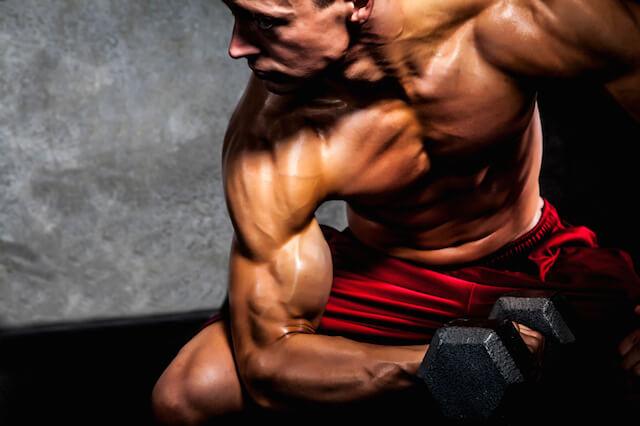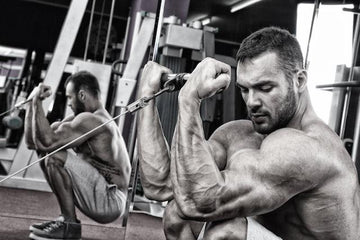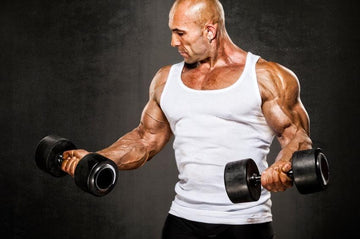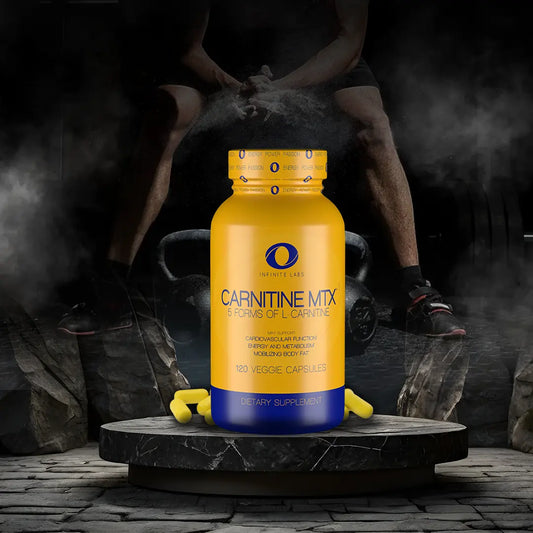

Can You Change The Shape of Your Muscles with Exercise?
Table of Contents
Can You Change The Shape of Your Muscles?
By: Christian Finn
Reprinted from Muscle Media Magazine
Bodybuilders have claimed for years that different exercises affect different parts of a muscle. You’ll hear that one exercise, for example, develops the “peak” of the biceps, while another exercise gives it “width” or “thickness.” Physiologists, on the other hand, say that all of this is nonsense. Muscle shape is determined entirely by your genetics. Doing a bunch of different exercises for the same muscle group is a complete waste of time.
So who’s right?
Back in the 1990’s, a Swedish scientist by the name of Per Tesch took a group of experienced bodybuilders and got them to perform a variety of different exercises.
Then, he used magnetic resonance imaging (MRI) to “look inside” their bodies to see which muscles were used to do the exercises. What Tesch found was that a change in grip width, hand position or even just the direction in which the feet were pointing led to a change in the region of the muscle that was worked most during an exercise. For example, the donkey calf raise with the toes pointed out worked the lateral head of the calves to a greater extent than the same exercise done with the toes turned in. Tesch also found that different exercises activate different parts of a muscle to a greater extent than others. The wide grip barbell curl worked the short head of the biceps to a greater extent than the long head. The incline curl, on the other hand, distributed the work evenly across both the long and short head of the biceps.
As well as MRI, researchers have used a technology known as electromyography (EMG) to chart electrical activity in a muscle during various exercises. EMG can be carried out in two ways. The first involves placing electrodes on the surface of the skin directly above the muscles that you want to analyze. The second uses fine wire or needle electrodes inserted into the muscle belly itself. EMG lets researchers see how different exercises, as well as variations in angles and grips, affect regional muscle activity. In one study, Australian scientists examined the effects of different bench angles and grips on muscle activity in the chest . They found that changing the angle of the bench and the width of the grip emphasized different parts of a muscle.
 Both the upper chest and long head of the triceps, for example, were more active with a shoulder-width versus a double shoulder-width grip, especially during the flat and incline bench press. More recent research, published in the January 2015 edition of the Journal of Strength and Conditioning Research, compared a knee-dominant exercise (the lying leg curl) with a hip-dominant exercise (the stiff-legged deadlift) . The results show that the lying leg curl led to greater muscle activation in certain parts of the hamstrings – the lower lateral and lower medial hamstrings in particular – compared to the stiff-legged deadlift.
Both the upper chest and long head of the triceps, for example, were more active with a shoulder-width versus a double shoulder-width grip, especially during the flat and incline bench press. More recent research, published in the January 2015 edition of the Journal of Strength and Conditioning Research, compared a knee-dominant exercise (the lying leg curl) with a hip-dominant exercise (the stiff-legged deadlift) . The results show that the lying leg curl led to greater muscle activation in certain parts of the hamstrings – the lower lateral and lower medial hamstrings in particular – compared to the stiff-legged deadlift.
Here’s how study author Brad Schoenfeld describes the results:
“Activation of the upper hamstrings was similar between exercises. Interestingly, however, activation of the lower hamstrings, both medially and laterally, was significantly greater in the lying leg curl “The differences in activation of the lower hamstrings was stark, with the leg curl showing greater lower lateral hamstrings activity of approximately 170% and lower medial hamstrings activity of approximately 65% compared to the stiff-legged deadlift.” These studies tell us that exercise selection, as well as variations in angles and grips, have an impact on regional muscle activation. But does this have any practical relevance to you and me? In other words, does a short-term difference in regional muscle activity translate to a long-term gain in muscle mass in that particular region?
Several studies have attempted to answer this very question. And the answer appears to be a qualified yes.
 Japanese researchers found that the part of the triceps that were highly active during dumbbell skull crushers were the parts that grew the most when the exercise was performed three times a week for 12 weeks . The same group of researchers also found that muscle activity in the triceps during the dumbbell bench press matched up with muscle growth in that exact same area after 12 weeks of training . In other words, the ability to emphasize a head or portion of a muscle group can cause that part of a muscle to grow more quickly, leading to a change in the shape and appearance of that muscle.
Japanese researchers found that the part of the triceps that were highly active during dumbbell skull crushers were the parts that grew the most when the exercise was performed three times a week for 12 weeks . The same group of researchers also found that muscle activity in the triceps during the dumbbell bench press matched up with muscle growth in that exact same area after 12 weeks of training . In other words, the ability to emphasize a head or portion of a muscle group can cause that part of a muscle to grow more quickly, leading to a change in the shape and appearance of that muscle.
There are, however, a few caveats.
 The main problem is that the extent to which the shape of a particular muscle can be altered is not unlimited. You and I can do concentration curls until the end of time. But we still won’t get a biceps peak like Robbie Robinson. In most cases, guys with a large biceps peak have a relatively short muscle belly and longer tendons. And the length of your tendons and muscle bellies can’t be altered through training. It’s much the same story when it comes to calves. Guys with high calves can do endless sets of calf raises with their feet pointing out at different angles. But the long Achilles tendon and short muscle belly will limit their ability to make their calves bigger. People with good calf development usually have short Achilles tendons and longer muscles bellies, where the potential for growth is that much greater.
The main problem is that the extent to which the shape of a particular muscle can be altered is not unlimited. You and I can do concentration curls until the end of time. But we still won’t get a biceps peak like Robbie Robinson. In most cases, guys with a large biceps peak have a relatively short muscle belly and longer tendons. And the length of your tendons and muscle bellies can’t be altered through training. It’s much the same story when it comes to calves. Guys with high calves can do endless sets of calf raises with their feet pointing out at different angles. But the long Achilles tendon and short muscle belly will limit their ability to make their calves bigger. People with good calf development usually have short Achilles tendons and longer muscles bellies, where the potential for growth is that much greater.
Conclusion
You can’t completely isolate one area of a muscle relative to another. And the potential shape and size of each muscle is determined ultimately by the genetic blueprint you were handed at birth. But you can make the most of that potential by using different exercises, as well as variations in grip width and angles, to emphasize different sections of a muscle. By using several exercises rather than just one, you ensure that all available fibers in a given muscle get a piece of the action, leading to more complete development of a muscle group.
References
1. Barnett, C., Kippers, V., & Turner, P. (1995). Effects of variations of the bench press exercise on the EMG activity of five shoulder muscles. Journal of Strength and Conditioning Research, 9, 222-227
2. Schoenfeld BJ, Contreras B, Tiryaki-Sonmez G, Wilson JM, Kolber MJ, Peterson MD. (2015). Regional differences in muscle activation during hamstrings exercise. Journal of Strength and Conditioning Research, 29, 159-164
3. Wakahara T, Miyamoto N, Sugisaki N, Murata K, Kanehisa H, Kawakami Y, Fukunaga T, Yanai T. (2012). Association between regional differences in muscle activation in one session of resistance exercise and in muscle hypertrophy after resistance training. European Journal of Applied Physiology, 112, 1569-1576
4. Wakahara T, Fukutani A, Kawakami Y, Yanai T. (2013). Nonuniform muscle hypertrophy: its relation to muscle activation in training session. Medicine and Science in Sports and Exercise, 45, 2158-2165
MUSCLE MEDIA MAGAZINE FOR MEN
The premier source of training, nutrition, supplements, fat loss and health for men.

















